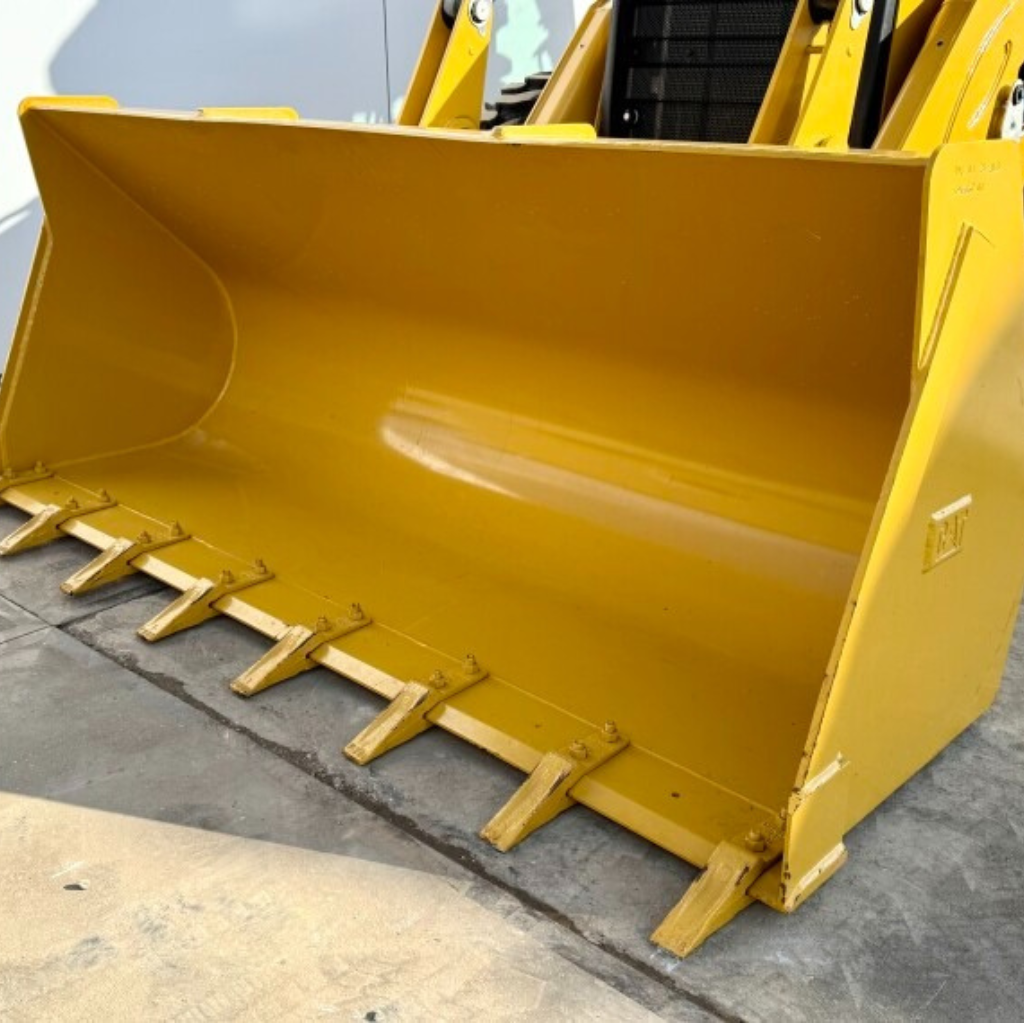
When someone mentions an Excavator Loader Bucket, most people picture a steel scoop on the end of an arm. But that simple image hides a surprising amount of engineering. Bucket shape, lip geometry, side cutters, and tooth design all interact with soil mechanics, material properties, and machine hydraulics to determine digging efficiency, fuel consumption, wear life, and operator control. This post breaks down the core science behind those design choices and explains why a bucket that looks “right” may perform wildly differently in real use.
At the most basic level, bucket shape determines how force from the excavator or loader interacts with the ground.
Curvature (profile): A deep, curved bucket promotes scooping and retention of loose material — ideal for bulk loading. A flatter profile increases cutting action and is preferred for scraping or grading. Curvature influences the fill factor (how completely a bucket loads on each pass) and the ease with which material stays in the bucket during lift and swing.
Cutting lip angle: A sharper lip angle reduces resistance when entering compacted soil or frozen ground because it concentrates force into a smaller area, improving penetration. A blunter lip is more durable and better for aggressive rock work where minor resistance gain is acceptable for longer life.
Side cutters and bucket width: Wider buckets move more material but require more horsepower and may reduce breakout force (force available to pry material loose). Side cutter geometry helps slice and protect the bucket sides during trenching and cutting tasks.
Volume vs. breakout force trade-off: Bigger buckets carry more material per cycle but reduce the mechanical advantage the machine has to pry material from the ground. Designers balance bucket capacity with the excavator’s hydraulic power and the expected material density to maintain efficient cycletimes.
Teeth are the intimate contact point between steel and ground. Small geometry changes have large effects.
Pointed vs. chisel teeth: Pointed (conical or tapered) teeth concentrate load into a small area, maximizing penetration into compact soils and frozen ground. Chisel-shaped teeth distribute load over a broader front, making them better for breaking rock or heavy, abrasive materials.
Ripper teeth: Long, narrow ripper teeth are designed to fracture cohesive materials like clay or frozen ground before the bucket scoops. They reduce required breakout force and improve filling in difficult soils.
Tooth adapters and retention: Tooth adapters (the part welded to the lip) allow rapid replacement and secure tooth retention under heavy shock loads. Bolt-on systems are cheaper but can loosen; pin-and-lock systems balance durability and serviceability.
Material and hardness: Teeth are often made from high-chrome or heat-treated steel with wear-resistant overlays. Harder materials resist abrasion but can be brittle in impact-heavy rock work—again, a trade-off.
Wear plates and replaceable lips reduce full-bucket replacement costs. Hardfacing at the lip and heel areas extends life where abrasion is highest.
Cutting edge thickness and bevel affect both penetration and durability. A thinner edge cuts easier, a thicker edge lasts longer. Bevel angles are tuned to the expected mix of penetration and abrasion.
Lip radius and throat opening influence how material flows into the bucket. A larger throat and smooth internal radii reduce bridging and increase fill factor for sticky soils and rocks.
The bucket doesn’t operate in isolation — linkage design (stick length, bucket linkage, pin locations) changes the direction and magnitude of forces transmitted to the lip and teeth.
Breakout force depends on hydraulic cylinder size and geometry; a bucket designed for high breakout does better with short, stiff linkages that create higher mechanical advantage at the lip.
Center of gravity and load distribution: A compact, deep bucket shifts load toward the machine, affecting stability during swing and lift. Designers arrange the bucket profile so the loaded center of gravity keeps the machine stable without sacrificing swing speed.
Bucket selection is task-specific:
General-purpose buckets are a compromise — moderate volume, moderate edge strength, and standard teeth. Good for varied tasks when you need flexibility.
Heavy-duty rock buckets have reinforced lips, thicker plates, and chisel or blunt teeth to resist impact and avoid tooth shearing.
Trenching buckets are narrow with pronounced side cutters and pointed teeth for fast penetration and precise trench profile.
Clean-up and grading buckets have no teeth or bolt-on cutting edges and a wider opening to produce smooth surfaces without tearing.
Design choices are only as good as the maintenance regime. Replaceable wear parts (teeth, adapters, wear plates) reduce lifecycle cost. Correct tooth selection for the material minimizes cycle time and fuel use; using the wrong tooth type accelerates wear and increases downtime.
An Excavator Loader Bucket may look simple, but its performance is a product of careful trade-offs: penetration vs. durability, capacity vs. breakout force, and wear resistance vs. impact toughness. Matching bucket shape and tooth geometry to the job and machine hydraulics translates directly into faster cycles, lower fuel consumption, longer service life, and fewer unplanned stops. The next time you see a bucket on a jobsite, you’ll know it’s not just steel — it’s applied soil mechanics, materials science, and pragmatic engineering all working together.
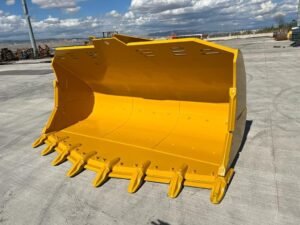
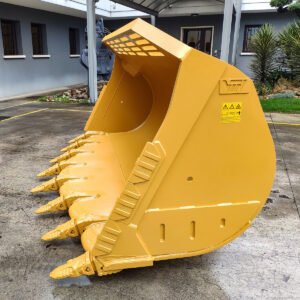
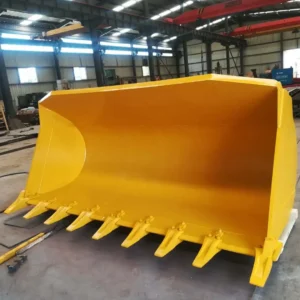
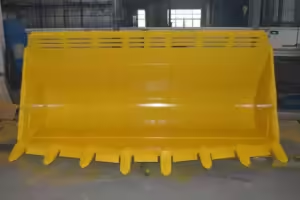
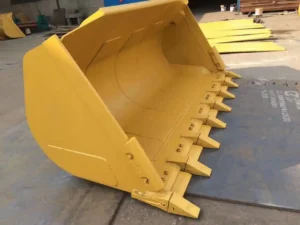
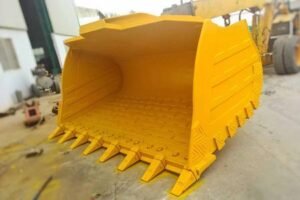
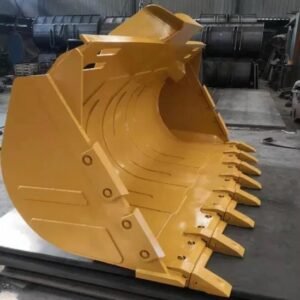
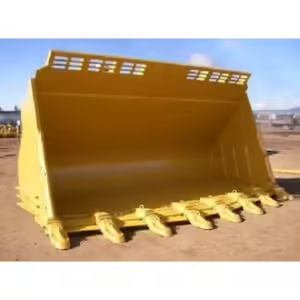
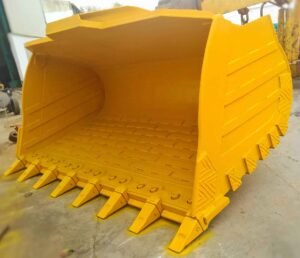
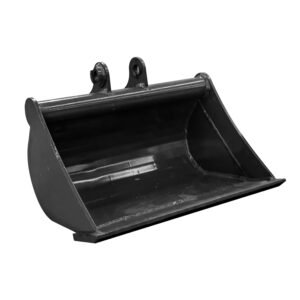
TEAM. All Rights Reserved. Developed by Pixel Tech.